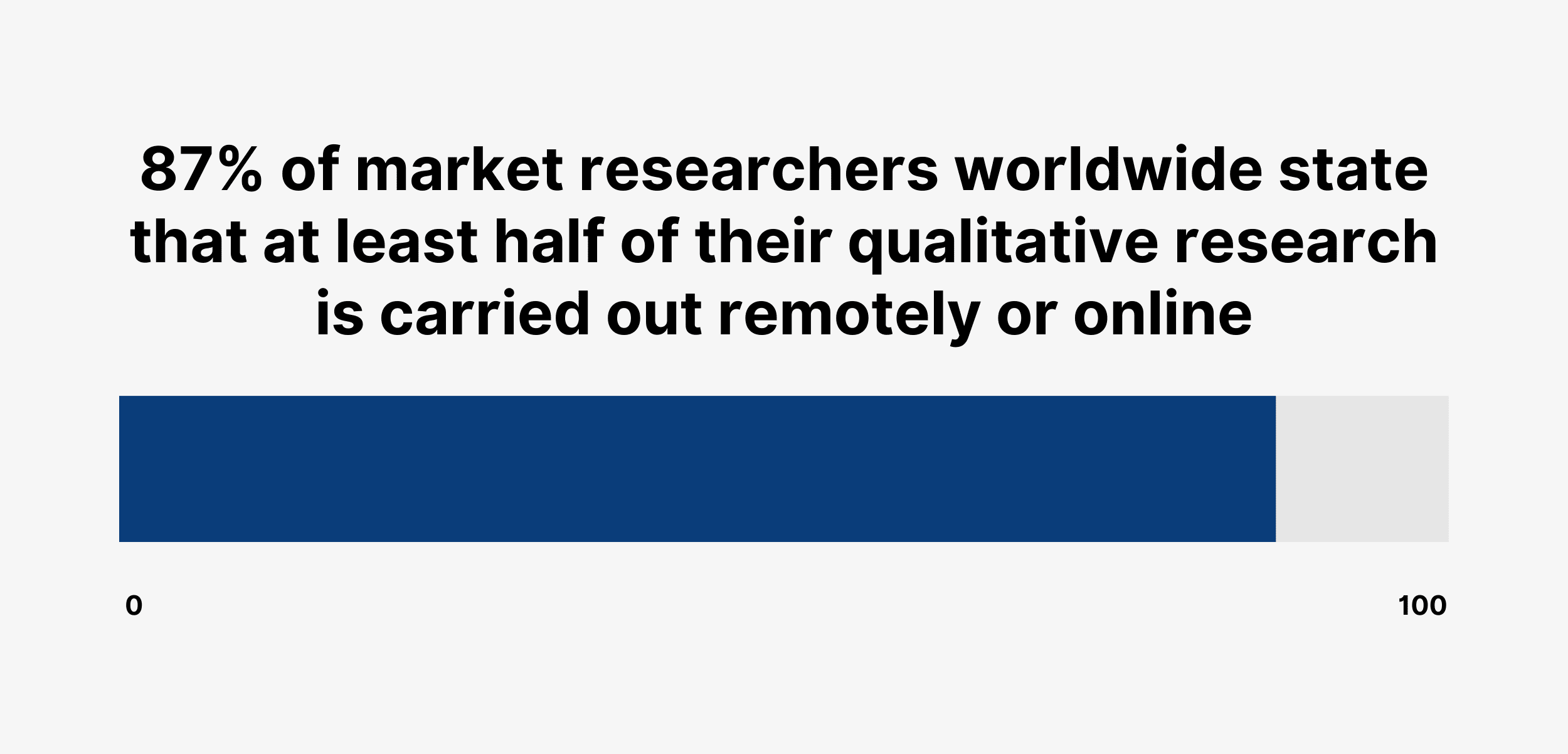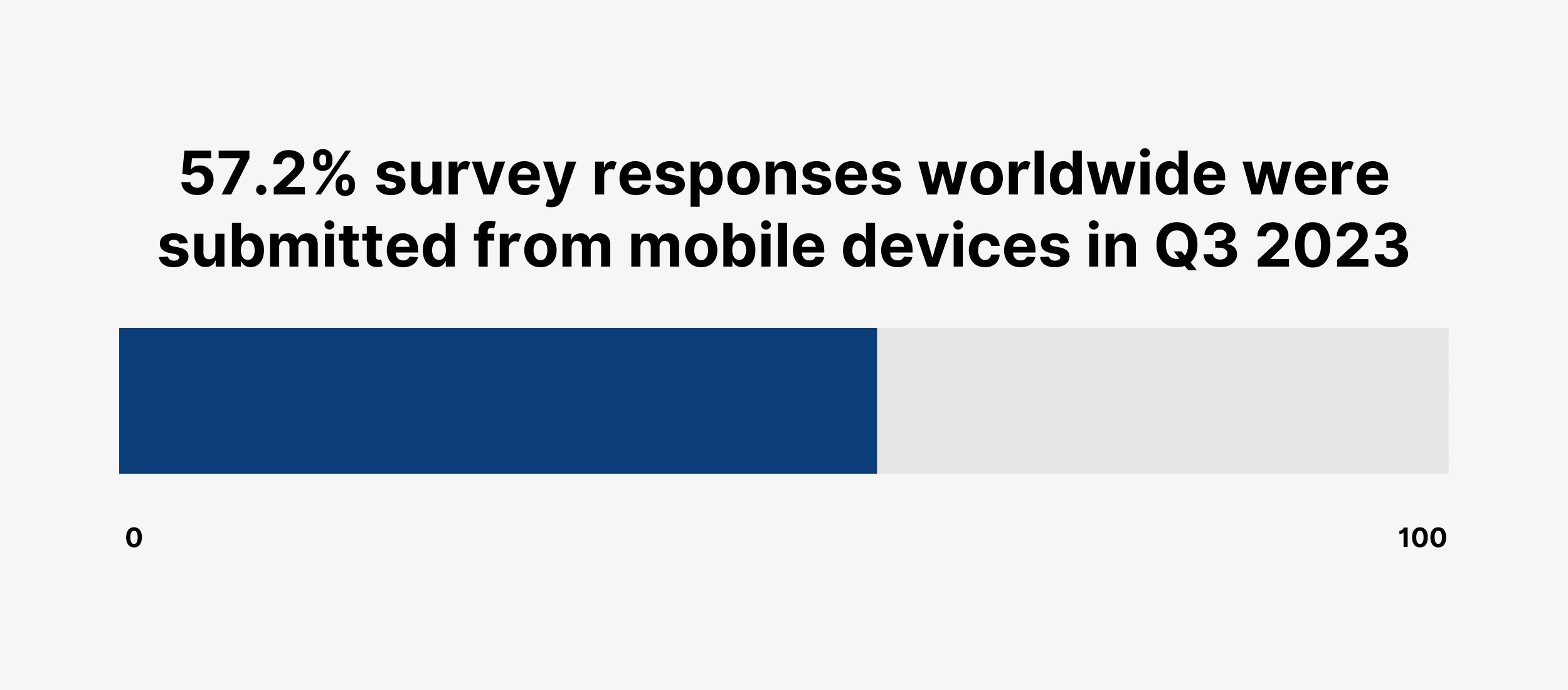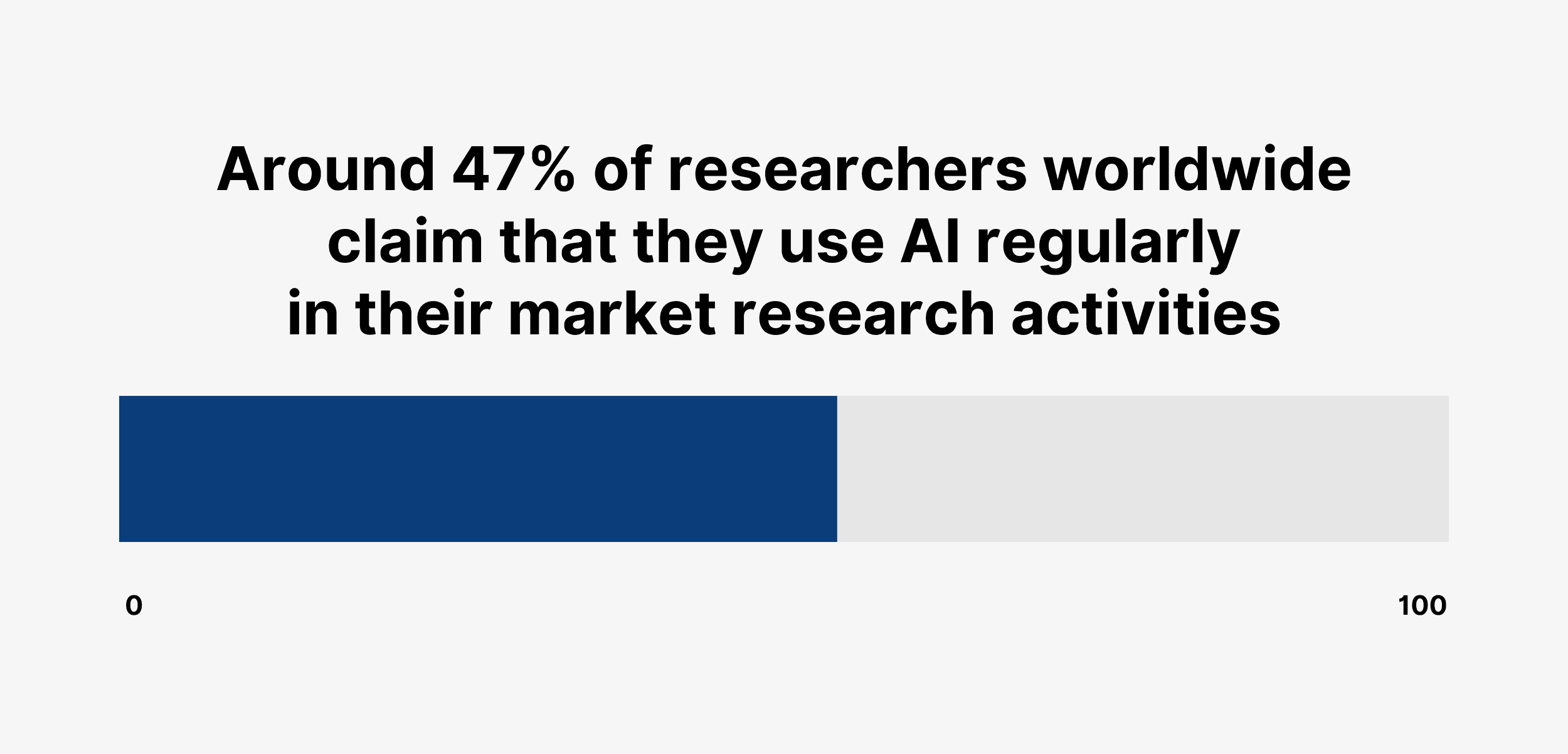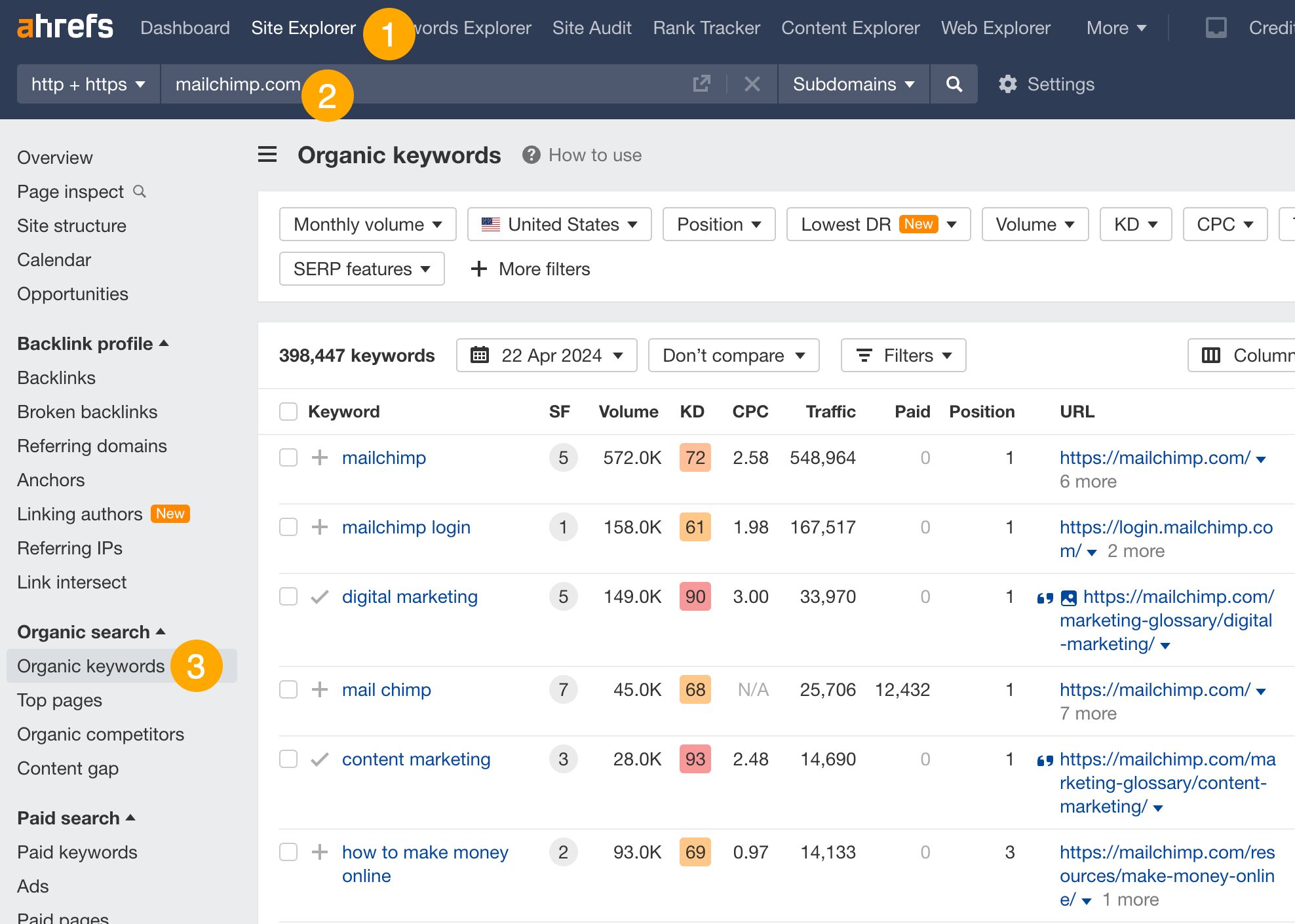
Market research is a growing multi-billion-dollar industry.
Brands leverage market research insights to introduce customer-focused offerings and improve their experiences.
From mobile-first surveys to social media analytics, researchers have access to a growing toolkit helping companies make data-driven business decisions.
Here’s a breakdown of what you’ll find on this page:
- Market Research Industry Statistics
- Market Research Methods Statistics
- AI in Market Research Statistics
Market Research Statistics (Highlights)
- The global market research industry is forecasted to bring in $140 billion in revenue in 2024.
- Online/mobile quantitative research services accounted for 35% of worldwide revenues of market research companies.
- Around 47% of researchers worldwide state that they use AI regularly in their market research activities.
- Online surveys rank as the most used quantitative method among market research professionals with 85% of respondents who say they use this method regularly.
- Online in-depth interviews with webcams rank as the most used qualitative research method, with over one-third (34%) of researchers using it regularly.
1. Market Research Industry Statistics
This section presents key statistics to show market research industry revenues, leading players in the industry and revenue breakdown by market research services.
- Global market research industry forecasted to generate $140 billion in revenue in 2024 (up from $130 billion in 2023) – ESOMAR
Note: Includes data from multiple sources (ESOMAR 1, ESOMAR 2, ESOMAR 3, Consultancy.org) Year Market research industry revenue (worldwide) 2016 $71.5 billion 2017 $78 billion 2018 $81 billion 2019 $88 billion 2021 $102 billion 2022 $118 billion 2023 $130 billion 2024 $140 billion - Between 2021 and 2024, the market research industry grew by 37.25% from $102 billion to $140 billion – ESOMAR
- When ranked by market research turnover, the US market leads the ranking with $48 billion, followed by the UK ($9.1 billion) and China ($2.88 billion) – ESOMAR
Note: Data as of 2021 Country Market Research Turnover United States $48 billion United Kingdom $9.1 billion China $2.88 billion India $2.2 billion France $2.12 billion Germany $2.11 billion Japan $2.04 billion Australia $753 million Canada $606 million Italy $586 million Spain $555 million South Korea $507 million - Gartner holds the top position as the highest-earning company in the market research field with $5.48 billion in research revenue in 2022, followed by IQVIA ($5.43 billion) and Salesforce ($4.52 billion) – Statista

Company Research Revenue (2022) Gartner $5.48 billion IQVIA $5.43 billion Salesforce $4.52 billion Adobe Systems $4.42 billion Nielsen $3.55 billion Kantar $2.72 billion Ipsos $2.53 billion Circana (IRI+NPD) $2.21 billion CoStar Group $2.18 billion S&P Global (IHS Markit) $1.97 billion - Online/mobile quantitative research services contributed 35% to the worldwide revenue of market research companies in 2022. Other major revenue contributors include reporting (20.2%), online traffic/web analytics (9.7%), online/mobile qualitative research (6%) – Statista
Type of Market Research Service Revenue Share Online/mobile quantitative research 35% Reporting 20.2% Online traffic/web analytics 9.7% Online/mobile qualitative research 6% Telephone CAITI 3.6% Online research communities 2.8% Social media monitoring 2.7% Automated digital/electronic 2.7% Face-to-face group discussions/focus groups 2.6% Face-to-face 2% In-depth face-to-face interviews 2% Other qualitative 1.7% Other quantitative 1.7% Audience measurement 0.9% Traditional ethnography 0.8% Other 0.4%
2. Market Research Methods Statistics
There’s a growing number of market research methods from traditional surveys to eye tracking available to market research professionals. In this section, we’ll cover recent stats on most used market research methods.
- According to a survey, 87% of market researchers worldwide state that at least half of their qualitative research is carried out remotely or online – Qualtrics

Region Qualitative Research Conducted Online (50% or more) Asia-Pacific and Japan 84% Europe, Middle East and Africa 85% Latin America 90% North America 87% - Online surveys rank as the most used quantitative method among market research professionals with 85% of respondents who claim they use this method regularly, followed by mobile surveys (47%) and proprietary panels (32%) – Statista
Quantitative Method Share of Researchers Who Use Regularly Online surveys 85% Mobile surveys 47% Proprietary panels 32% Online communities 26% CATI 13% Face-to-face 12% CAPI 10% Automated measures/people meters 7% Mail 4% IVR 4% Neuroscience measurements 4% Biometrics 3% Other quantitative techniques 16% - Among qualitative methods, online in-depth interviews with webcams (34%) and online focus groups with webcams (28%) are most commonly used among researchers – Statista
Qualitative Method Share of Researchers Who Use Regularly Online IDis with webcams 34% Online focus groups with webcams 28% Online communities 28% Mobile 20% In person IDIs 16% In person focus groups 14% Telephone IDIs 13% Bulletin board studies 11% In-store/shopping observations 11% Chat (text-based) online focus groups 10% Other qualitative methods 10% Chat (text-based) online IDIs 7% Monitoring blogs 7% Automated interviewing via AI systems 5% Telephone focus groups 3% - By survey type, nearly half of market research spending (43.8%) was used on customer satisfaction (16.4%), market measurement (15%), user experience surveys (12.4%) – Statista
Survey Method Share of Spending CRM Systems/Customer Satisfaction 16.4% Market measurement 15% User experience 12.4% Usage and behavioral studies 11% (Media) Audience research 10.3% New product/service development 9.3% Opinion survey/polling 5% Omnibus/cost-sharing surveys 5% Advertising/brand tracking 4.6% Employee satisfaction 2.5% Ad pre-test 1.9% Business-to-business research 1.8% Market modeling 1.4% Non-profit research 0.9% Mystery Shopping 0.5% Other 1.9% - Nearly 6-in-10 (57.2%) survey responses worldwide were submitted from mobile devices in Q3 2023. That’s a slight increase from 56.2% in Q3 2021 – SurveyMonkey

Date Mobile Non-Mobile Q4 2020 52.0% 44.7% Q1 2021 52.1% 44.7% Q2 2021 53.0% 43.8% Q3 2021 56.2% 41.1% Q4 2021 55.3% 41.6% Q1 2022 55.0% 41.5% Q2 2022 56.1% 40.6% Q3 2022 58.2% 38.7% Q4 2022 56.9% 39.9% Q1 2023 54.7% 40.4% Q2 2023 55.1% 40.3% Q3 2023 57.2% 38.6% - In the US mobile survey responses accounted for 47.6% of all survey responses (vs. 48.2% on non-mobile devices) in Q3 2023 – SurveyMonkey
Date Mobile Non-Mobile Q4 2020 39.7% 55.7% Q1 2021 40.7% 54.9% Q2 2021 39.7% 56.0% Q3 2021 41.8% 54.5% Q4 2021 41.8% 53.5% Q1 2022 42.0% 52.9% Q2 2022 43.4% 51.8% Q3 2022 44.7% 51.3% Q4 2022 43.9% 51.4% Q1 2023 43.7% 50.2% Q2 2023 45.1% 49.7% Q3 2023 47.6% 48.2% - On average, online surveys hosted on one of the platforms included 11 questions in 2023. That’s down from 11.8 questions in 2019 – SurveyMonkey
Year Average Number of Questions 2010 12.1 2011 12.0 2012 11.8 2013 11.5 2014 11.5 2015 13.0 2016 13.1 2017 13.2 2018 12.2 2019 11.8 2020 10.2 2021 10.5 2022 10.7 2023 11.0 - More than half (54%) of online surveys feature 5 or fewer questions per page – SurveyMonkey

Number of Questions Per Survey Page Share of Surveys 1 or fewer 7% >1 to 2 14% >2 to 3 13% >3 to 4 11% >4 to 5 9% >5 to 6 7% >6 to 7 6% >7 to 8 5% >8 to 9 4% >9 to 10 5% More than 10 18% - More than 6-in-10 (62%) researchers say that their “company depends on their research and insights significantly” – Qualtrics
- A majority of researchers have reported an increase in their budgets allocated for customer experience (CX) research (53%), consumer trends (52%), UX research (51%), qualitative research (51%) and brand strategy (50%) – Qualtrics
3. AI in Market Research Statistics
AI is disrupting nearly every industry and job function. Market research is no exception and there are various AI use cases to apply in the everyday work of market researchers. We’ll explore the latest stats on AI adoption rate among market researchers in this section.
- Around 47% of researchers worldwide claim that they use AI regularly in their market research activities – Qualtrics

- The share of AI adopters among researchers varies depending on the region, with the highest usage in Asia-Pacific & Japan (58%) and the lowest in North America (39%) – Qualtrics
Region Share of Researchers Who Regularly Use AI Asia-Pacific and Japan 58% Europe, Middle East and Africa 51% Latin America 51% North America 39% - The vast majority (73%) of researchers worldwide claim they’re “very confident” or “extremely confident” on how to apply AI to their market research activities – Qualtrics
- Around 1-in-4 researchers state they’re concerned about AI impact outpacing their personal or team skills – Qualtrics
Conclusion
That’s it for my list of market research statistics.
While market research has been around for a while, it has been undergoing constant transformation. It will be interesting to see how AI impacts market research projects.
We update this list of statistics from time to time so feel free to check it later for new insights.
Content Copyrights Belong to The Author. All Rights Reserved.
We're A Dallas Digital Marketing Agency That is Experts At Social Media Marketing, Website Design and Emarketing and Promotion.



